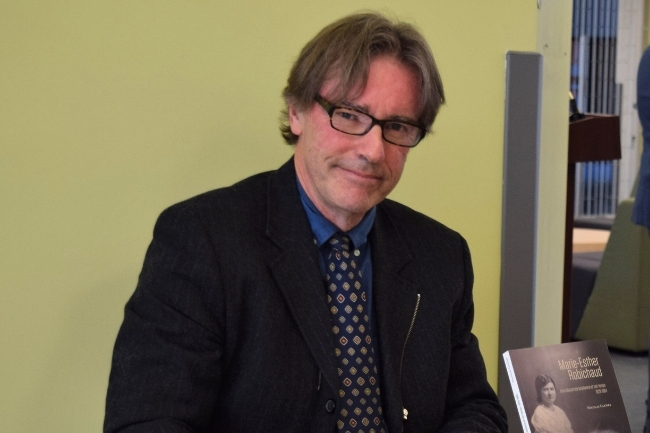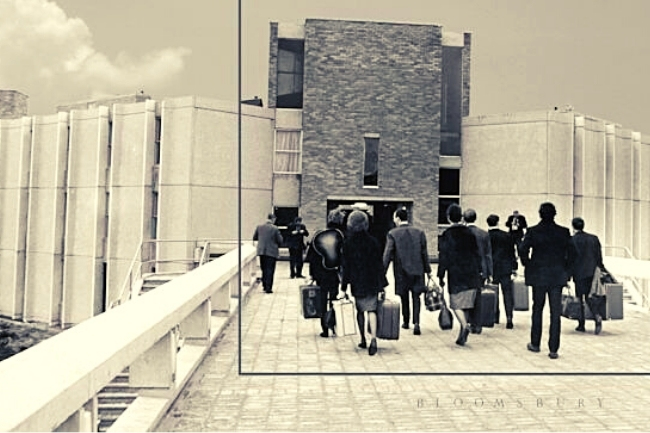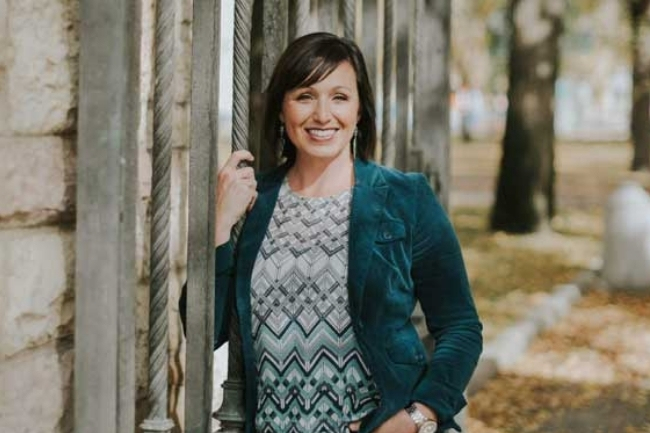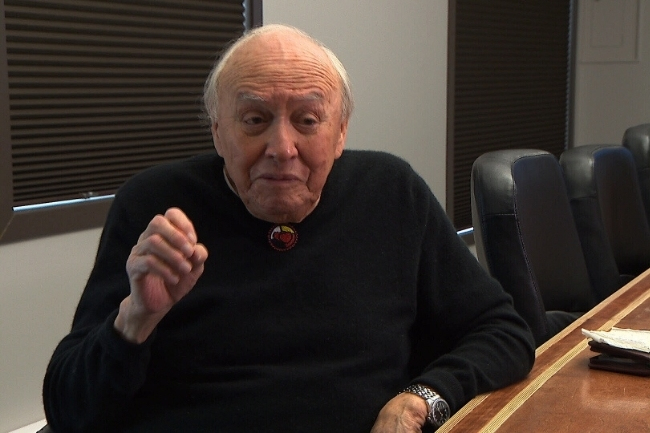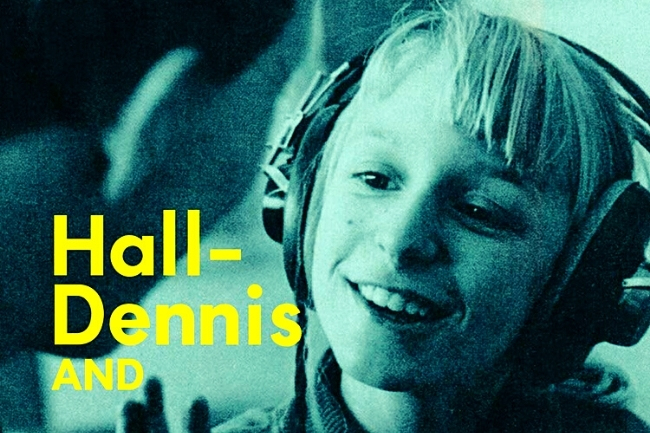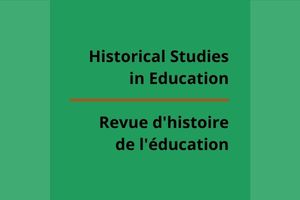Posts com a Tag ‘Historical SE (HSEr)’
Toward the Health of a Nation: The Institute of Health Policy, Management and Evaluation — The First Seventy Years | Leslie A. Boehm
Leslie A. Boehm | Imagem: University of Toronto
This book is a lengthy institutional history of the Institute of Health Policy, Management and Evaluation (IHPME) at the University of Toronto, published by the Institute itself. The Institute and its various precursors were the most important public health education programs in Canada for most of the twentieth century, providing essential training for individuals who would shape public health at the local, provincial, and federal levels. The genealogy of the IHPME goes back to the founding of the School of Hygiene at the University of Toronto in 1924, with Dr. J. G.
FitzGerald as its director. Funded by the Rockefeller Foundation, the School would establish an international reputation under FitzGerald’s leadership. The rapid expansion of hospitals after the Second World War drove demand for a new class of managers. The Department of Hospital Administration, nestled within the School of Hygiene, welcomed its first class in September 1947. Not surprisingly, graduates of the hospital administration program found employment in hospitals and in government. After 1967, the focus shifted from “hospital” to “health” administration as the school refined its programs, while concurrently solidifying its position as an important training centre for a cadre of administrators who would become influential throughout English-speaking Canada. Leia Mais
Marie-Esther Robichaud. Une éducatrice acadienne et son temps/ 1929– 1964 | Nicolas Landry
NIcolas Landry | Imagem: Acadie Nouvelle
Parmi les richesses des archives du campus de l’Université de Moncton, campus de Shippagan, on retrouve un fonds très intéressant sur l’état du système scolaire francophone dans le monde acadien au Nouveau-Brunswick au milieu du siècle dernier, c’est-à-dire de 1929 à 1964 environ. En effet, ces documents, surtout des lettres et des rapports, recèlent des informations importantes sur la formation du corps enseignant au primaire et au secondaire. De plus, les documents témoignent de l’évolution du système scolaire, des heurs et des malheurs des maîtres tant dans les petites écoles que dans les écoles secondaires et les collèges. Ces précieux documents sont signés par Marie-Esther Robichaud, enseignante, puis directrice d’école et ultimement, assistante du surintendant des écoles dans le comté de Gloucester dans le nord-est du Nouveau-Brunswick. L’historien, Nicolas Landry, a exploré ce fonds d’archives. Il nous en livre une solide description.
Landry témoigne tout autant des grands progrès qu’il a fallu accomplir pour amener une certaine uniformité à la fois dans le contenu des matières enseignées et dans la formation du personnel enseignant que des succès qui viendront couronner les efforts de Marie-Esther Robichaud et des nombreux problèmes auxquels elle aura su apporter des solutions. Ces informations nous sont présentées en sept chapitres. Leia Mais
Utopian Universities: A Global History of the New Campuses of the 1960s | Jill Pellew e Miles Taylor
Detalhe de capa de Utopian Universities: A Global History of the New Campuses of the 1960s
The 1960s were a period of expansion in many higher education systems. In their introduction to Utopian Universities, Pellew and Taylor note that approximately 200 new university campuses were created during the decade, and these initiatives provided a unique space to redesign the university in physical, organizational, and curricular terms. Emerging from a two-year project, this edited volume focuses on the developments and aspirations associated with a selection of these new universities, contributing to our understanding of this important developmental phase within higher education in some jurisdictions.
The first section of the book, which focuses on the development of nine new universities in the United Kingdom (UK) (including seven in England) is the strongest and most integrated component of the volume, in large part because of the relatively common contextual elements underscoring these initiatives, but also because the section includes a number of quite masterful thematic analyses. These include an outstanding chapter by William Whyte describing the influence of the “Redbrick” civic universities on the new British universities that emerged in the 1960s, and the fascinating assumptions underscoring the design and architecture of these new campuses. Leia Mais
Intimate Integration: A History of the Sixties Scoop and the Colonization of Indigenous Kinship | Allyson Stevenson
Allyson Stevenson | Imagem: Eagle feather News
Social workers, like teachers, played a significant if unintentional role in the colonization of First Nations and Métis peoples in Canada by engaging in approaches to providing services where “assimilation took the guise of benign and de-racialized technologies of helping” (109). Métis scholar and historian Allyson Stevenson reveals this truth in her detailed and critical account of Sixties Scoop when there was a sudden escalation in the apprehension and transracial adoption of Indigenous children.
While Stevenson, an adoptee herself, focuses her account on Métis experiences in Saskatchewan, she provides an examination of broader historical contexts and regional, national, and even international policies and laws that sustained the “colonial intrusion into the intimate realm of Indigenous families” (4). Leia Mais
Reunion, Remembrance, and Reclamation at an Urban Indian Residential School | Survivors of the Assiniboia Indian Residential School e Andrew Woolford
Theodore Fontaine, a survivor of the Assiniboia Indian Residential School and one of the authors of “Did you see us? Reunion, Remembrance and Reclamation at an Urban Indian Residential School.” | Imagem: CTV News
Did You See Us? asks readers to participate in a reunion amongst a sociologist, the Winnipeg community, and Survivors of the Assiniboia Indian Residential School. Operating between 1958 and 1973, this residential institution was different than the previous fifteen that existed in Manitoba, as it was both the first residential high school in the province and the first within an urban setting (Winnipeg). Administered by the Oblates of Mary Immaculate, the school existed as a place to offer high school education for students from remote communities. In this way, the school presented itself to be a typical urban high school, but the varied student perspectives acknowledged, “it was still a residential school” (16).
By the time survivors arrived at Assiniboia, they had experienced multiple residential schools under the direction of various religious denominations. Therefore, some students, including the late Theodore Fontaine, thought of the school as “a little oasis in a sea of turbulent seas” due to the higher quality of food and caring teachers who pushed them to do well both in academics and extracurriculars (29). The school day was still structured around prayers, a strict segregation of genders, and isolation from their home communities. However, in comparison to their former Indian day, residential, or public schooling experiences that happened before or after Assiniboia, the urban high school was remembered more fondly for many students. These recollections were in part due to the friendships that were made, additional extracurricular activities including dances, sports, community events, and the opportunity for many students to explore an urban area for the first time.
The physical book was created in conjunction with Survivors from The Assiniboia Residential School Legacy Group and Dr. Andrew Woolford, an experienced sociologist on this topic. As a settler scholar, Woolford’s name does not appear on the cover of the book and only appears after the Survivors’ stories in part 3. This act of centring the community’s history as an author demonstrates Woolford’s commitment to answering the title of the book, Did You See Us? We are forced to confront this story from the perspective of residential school survivors rather than an academic. Woolford’s chapter is followed by four additional parts, which recount stories from former staff, neighbours, the general Winnipeg community, and three separate reunions (2013, 2015, 2017).
Together, these distinct parts combine Indigenous community research, oral history, and archival analysis into an informative account of this understudied institution. The purpose of the book is to help survivors in “reclaiming our former school and its legacy” for healing and commemoration (xxiii). This was a twofold goal which included the creation of new spaces to share stories about the school while survivors were still alive, and at the same time educating the broader Winnipeg community about its legacy. In this manner, the story becomes a collection of multiple perspectives that reads more circular than linear. This works particularly well due to the incompleteness of the archival record and the varied experiences students remembered that was largely dependent on their previous schooling and in what decade they attended.
In the mid 1970s, when the school was being demolished, only a few students’ embroidery work was saved along with the 1958–59 class photograph. The book fills in those missing details when the physical building was reconstructed to fit the needs of a new RCMP forensic lab. Did You See Us? also included the perceptions of white students around the school, nearby neighbours, former staff, and the local Winnipeg community members who were actively engaged in the reunion. Woolford balances the varied perspectives of those both inside and outside the institution with the reality of the genocidal policies during this period. Did You See Us?, then, is not just a book, but a physical archive constructed through a particular context which included physical reunions, the sharing of historical posters, and the production of a peer-reviewed text. The book is larger than its physical presence as it represents a relational memory that was led by the local Indigenous community and translated into an academic text.
The book does present a historical conundrum when conducting research at a school reunion. As one survivor, Betty Ross, noted, “the residential school either made you or broke you” (9). As a result, we hear a lot from the students who were “made” in the school and nothing from the students who either passed away before the reunion or did not want to relive those memories with classmates (9). Woolford is blunt about these missing pieces: “They are an incomplete set of remembrances” in the sense that only some stories could have been possibly shared in 2017 (199).
However, these “incomplete” memories are better than no memories, and the book itself represents the most complete information. It also presents several troubling questions about the reality of educational integration efforts for Indigenous people in this period and the ongoing experience of Indigenous students who still attend high school far from their home communities.3 In a circular way, the former school building now houses the Canadian Centre for Child Protection, ensuring the memory and legacy of its former occupants are remembered. I would highly recommend this book for new settler scholars in Indigenous studies. Woolford is honest about his inexperience hosting survivor reunions and his reluctance to engage in work that only benefits academics rather than the Indigenous communities in their area. Woolford employs an “unsettling methodology” which supported the Assiniboia Survivors Legacy Group to own, control, access, and possess their histories, and is an excellent template for future Indigenous community-led research in education (198). The book will serve as an important archive of the Assiniboia Indian Residential School and represents an urban community’s reckoning with its colonial past.
Resenhista.
Jackson Pind – Queen’s University.
Referências desta resenha
Survivors of the Assiniboia Indian Residential School; WOOLFORD, Andrew (eds.). Did You See Us? Reunion, Remembrance, and Reclamation at an Urban Indian Residential School. Winnipeg: University of Manitoba Press, 2021. 272p. Resenha de: PIND, Jackson. Historical Studies in Education / Revue d’histoire De l’éducation. Vancouver, v.34, n.1, 2022. Acessar publicação original.
Hall-Dennis and The Road to Utopia: Education and Modernity in Ontario | Josh Cole
Detalhe de capa de Hall-Dennis and The Road to Utopia: Education and Modernity in Ontario
When you open Josh Cole’s book Hall-Dennis and The Road to Utopia you find a series of photos of children and teachers happily working in open concept classrooms, engaging with new postwar technology (TVs, headphones, tape machines), and running freely in fields. These photos are part of the 1968 Ontario education document Living and Learning: The Report of the Provincial Committee on Aims and Objectives of Education, also known as the Hall-Dennis Report. The images, along with the written report, suggest a new purpose for education, at the forefront of modernity, progress, and creativity. Cole argues these images were used to indicate schools were no longer “a place of confinement but instead a place of enjoyment,” now depicted as modern art galleries, highlighting “clean lines, bright lights and a modernistic sensibility” (185). However, Cole also suggests that the images, and much of the narrative in the report, were a veneer of openness and did not represent the real substance of the report, which was to maintain conservative libertarian positions on individualism and citizenship. Leia Mais
Colour Matters: Essays on the Experiences/ Education/ and Pursuits of Black Youth | Carl E. James
Carl E. James | Imagem: Tweeter
Dr. Carl E. James (FRSC) is currently the Jean Augustine Chair in Education, Community and Diaspora in the Faculty of Education at York University. Over the past three decades, his scholarship has focused on the intersections of race, ethnicity, culture, language, and identity in the Canadian context. Dr. James’ essay collection entitled Colour Matters: Essays on the Experiences, Education, and Pursuits of Black Youth is a culmination of his research about Black Canadian youth.
A key feature of this collection is that James structures the chapters with a “Call and Response” style, a linguistic form originating in sub-Saharan Africa. James describes this as a conversation that is meant to provoke larger critical dialogues. Each chapter begins with a “Call” that is, an essay drawn on primary and secondary research conducted by James over the past two decades. The second part of the chapter is a “Response” from one of ten internationally recognized scholars from the United Kingdom, Canada, and the United States. This structure allows the reader to integrate new perspectives about each topic. Leia Mais
Boom Kids: Growing Up in the Calgary Suburbs/ 1950–1970 | James A. Onusco
Detalhe de capa de Boom Kids: Growing Up in the Calgary Suburbs/ 1950–1970
Since their conception, scholars have treated suburbs as a sociological petri dish, a delineated space in which to examine an evolving landscape and the social dynamics within its borders. Almost every field of history has a stake in the suburban narra-tive, producing diverse work interrogating gender and sexuality, evolutions in tran-sit, housing, and consumerism, the politics of city planning and local governance, impacts on health and the environment, and the intertwined notions of conformity, gatekeepers, and outsiders. The history of childhood has often travelled to the sub-urbs. This is most apparent in studies of North America’s postwar suburbs, when parents were increasingly outnumbered by their baby boom offspring and a child-hood focused on academics, safety, and character building was championed. James Onusko’s Boom Kids: Growing Up in the Calgary Suburbs, 1950–1970 contributes to this discourse by shifting the oft dominant central Canada-focus of both childhood and suburban history to the prairies. Onusko recounts the history of Calgary’s Banff Trail suburb from the vantage point of its youngest residents to demonstrate “both consciously and unconsciously [how] children and adolescents influenced suburbia, just as it shaped them” (2). Leia Mais
Historical Studies in Education | UBC | 1999
We publish articles on every aspect of education, from pre-school to university education, on informal as well as formal education, and on methodological and historiographical issues. We also look forward to articles which reflect the methods and approaches of other disciplines. Articles are published in English or French, from scholars in universities and elsewhere, from Canadians and non-Canadians, from graduate students, teachers, researchers, archivists and curators of educational museums, and all those who are interested in this field.
La Revue d’histoire de l’education (Vancouver, 1999-) publie des articles portant sur tous les aspects de l’éducation, depuis la maternelle jusqu’à l’université, tant formelle qu’informelle, y compris des réflexions méthodologiques et historiographiques. La Revue est également ouverte aux contributions reflétant les méthodes et les approches propres à d’autres disciplines. Les articles publiés, en français ou en anglais, sont le fait de scientifiques, universitaires ou non, de Canadiens et de non Canadiens, d’étudiants diplômés, d’enseignants, de chercheurs, d’archivistes, de conservateurs de musées scolaires et, enfin, de tous ceux qui sont intéressés par le domaine de l’histoire de l’éducation.
Periodicidade semestral.
Acesso livre.
ISSN [?]
Acessar resenhas
Acessar dossiês
Acessar sumários
Acessar arquivos



